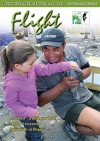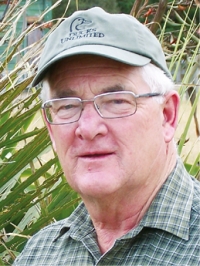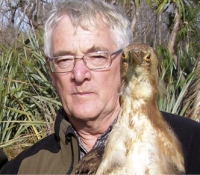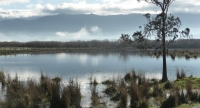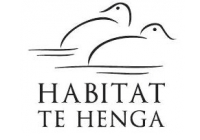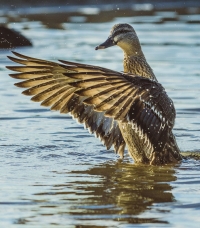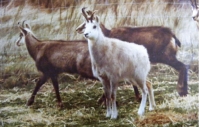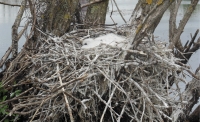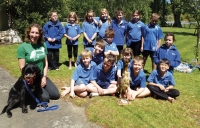Well we have survived another predicted El Nino summer and in Hawke’s Bay, where I reside, most wetlands managed to avoid drying out because we did receive some welcome rain in the latter part of summer. This was of significant benefit to a wide diversity of bird and fish species dependant on these wetlands. Wetlands…
Published in
Issue 167
Tagged under
An experience for this year’s DUNZ AGM. Taupo is our top spot this year and there is plenty of time to get prepared. Catch up with all those friends you only see once a year. Enjoy the company; enjoy the food; and the scenery. The Millennium Hotel on the Taupo Lake Terrace, good food, good…
41st Annual General Meeting August 2015 Ducks Unlimited New Zealand 8.30am at Distinction Hotel and Conference Centre, Palmerston North. Welcome: The President John Cheyne, welcomed members to the 41st Annual General Meeting. A special welcome was extended to the Piranis. Apologies: Glenys Hansen and Athol Rowden, Dan and Sandy Steele, Peter and Anne Russell, Chris…
It gives me great pleasure in presenting my annual report for 2015-16. While a relatively small organisation we certainly punch above our weight in terms of achieving positive outcomes with wetlands and the biodiversity they support. DU and our wetland conservation arm, Wetland Care NZ, has supported the construction of a number of wetlands in…
Published in
Issue 167
Tagged under
This page had a big gap, and because I sometimes do not get enough copy from members or from my web searches I needed a filler. Then I remembered this magic photo taken by Will Abel way back in 2013. Can we remember that far back?For those of you who have not visited Wario wetlands…
As the end of the year approached, the Pateke at te Henga were still holding their own and week after week 17 birds were being detected, that is an 85 percent survival. Accordingly, the Pateke Recovery Group indicated that all would be on for a February release and could we please ensure that transmitters and…
Published in
Issue 167
Tagged under
Jamie Steer University of Auckland I was talking with a guy the other day about ducks and somehow got on to discussing favourites. His was the blue duck because it’s on the $10 note. He said, ‘That’s a bird that knows how to sell itself’. ‘Maybe that’s true,’ I said, ‘but I haven’t seen many…
Thank you Liz, for another excellent Flight magazine. Full of interest. It’s always been a strong point of DUNZ. I particularly enjoyed the Whio News 2015 (page 14) and the “Ghost flow” photo of the whio of very pale colouring that had set up on the Whakapapanui. Peter Russell will have been well aware, but…
Published in
Issue 167
Tagged under
A great day out at Ruatiti Domain on the Manganui a te Ao River where we released 12 captive reared Whio, 7 females and 5 males. We had a good turn out with school children, Iwi, Horizon councillors, land owners, two Orana Park staff who released one of the Whio they had raised, a film…
Published in
Issue 167
Tagged under
The presentation of DUNZ’s certificate “in recognition and appreciation of support to NZ’s waterfowl and wetland habitat” to Ian Gunn from Greater Wellington Regional Council (GWRC) – Manager of GWRC’s Wairarapa Moana Project and a great supporter of the Wairio Wetland Restoration Project. Ian was critical in securing a “step change” in funding for the…
Published in
Issue 167
Tagged under
Southland has long been recognised for its duck population and the associated buzz around the district during the first weekend in May! However, the combination of several poor mallard breeding seasons in a row and in response to hunters concerns about the struggling North Island population, the Southland Fish and Game Council funded a national…
The photo is of spoonbill chicks in a nest early this year. The nest itself is a pretty loose affair of sticks placed in the base of a dead willow tree and surrounded by open water on all sides. As the chicks age the nest becomes a lot whiter, the result of droppings from both…
Published in
Issue 167
Tagged under
Widespread in swamps, (Carex secta), is a tussock-forming sedge. Its drooping leaves are rough and can cut the skin. It used to be called niggerhead, a term now considered unacceptably derogatory, because it resembles the feathered head wear of African tribes people, or to describe the plant’s blackened appearance after the fires that swept through…
Urban bittern chicks get into strife Now, if I was to ask how many of you have seen a juvenile bittern or a bittern nest, I think it’d be safe to assume that most of you haven’t. And that’s saying a lot given that you are all wetland enthusiasts who regularly work and play in…
Published in
Issue 167
Tagged under
Keep alert – invaders are everywhere No 1: Velvertleaf. As of Wednesday April 20, Velvetleaf had been confirmed on 196 properties in 11 regions of New Zealand. This number is expected to increase as the Ministry for Primary Industries (MPI) continue to visit properties in Otago and Southland known to have planted the Kyros or…
Published in
Issue 167
Tagged under
Winners of the 2015 Seabird Smart Awards have changed the behaviour of their entire fishing fleet to ensure the wellbeing of seabirds. Bill Mansfield, chair of the Southern Solutions Seabird Trust, pointed out that New Zealand had an international responsibility to ensure the long term survival of seabirds. Tom Searle, operations manager of Leigh Fisheries…
Floodplain revegetation can alleviate flood severity (UK) A study by an international team of scientists, led by the Universities of Birmingham and Southampton in the UK has shown that strategic planting of trees on floodplains could reduce the height of flooding in towns downstream by up to 20 percent, according to research published in the…
Published in
Issue 167
Tagged under
Breeding success continues at Mt Bruce Pukaha Shore Plover:26 chicks were raised with some released at Waikawa and some at Motutapu. Four remain at Pukaha to continue with the breeding programme. Pateke:18 ducklings from the two breeding pairs at Pukaha. These were sent to the pre-release site, Peacock Springs near Christchurch, before they are released…
Published in
Issue 167
Tagged under

